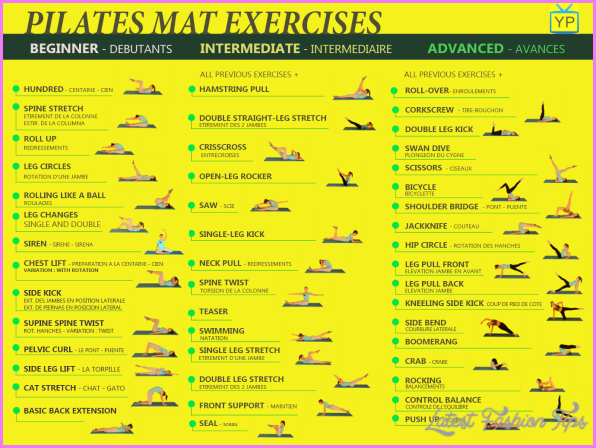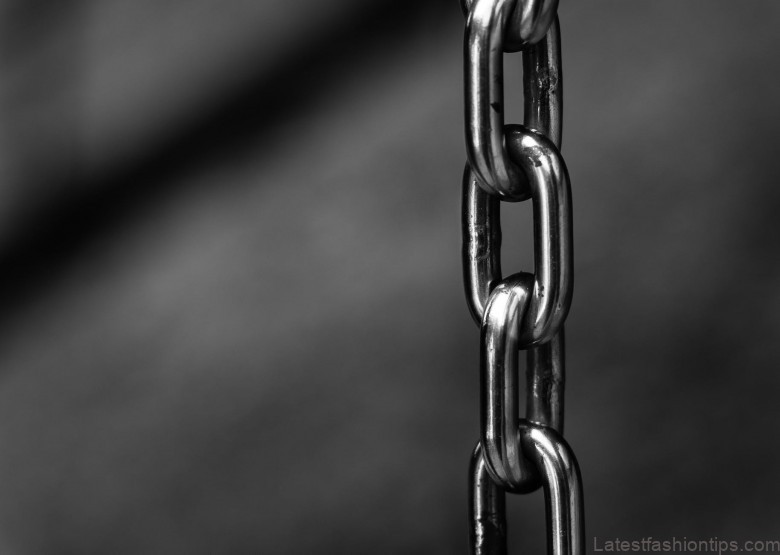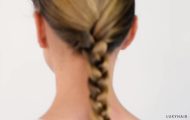Toddlers diet
Eating habits and the amount of food children have during the second year often become a source of conflict and worry. Fundamentally, your child needs food-
stuffs from three basic groups for healthy development, as well as vitamins and minerals.
Protein. Food containing protein is the most important in a childs life because it is an essential part of all cells and vital for proper growth and development of all parts of the body, including the brain. First class proteins are found in meat, eggs, fish and milk. While the second class proteins (so-called because they do not contain all the amino acids) include peas, beans, lentils and nuts. Both sources of protein should be included in the diet.
Carbohydrates. These foods produce energy and heat and consist of starches, sugars and cellulose found in potatoes and other root vegetables, cereals, bread, rice, honey and fruit. They give a temporary feeling of fullness and provide kilojoules which are converted into energy. Cellulose which is found mainly in fruit provides bulk which helps prevent constipation. Sugars are found in various forms in fruit, but most sugar in the diet comes from sucrose which is the ordinary sugar used in the making of sweets, jams, cold drinks and the like. Sugar provides energy quickly but can spoil the appetite for essential protein foods. The energy provided by sugar is burnt up rapidly and if there is a steady intake of sugars without the other foodstuffs, in particular protein, blood sugar levels can rise and fall rapidly, leaving the child or adult alternately highly active or hypoglycaemic with symptoms of rattiness, restlessness, tiredness and generally difficult behaviour.
Behavioural problems resulting from poor eating patterns. This difficult behaviour often has a scenario that goes something like this. The child picks at her midday meal, then the mother takes her out, perhaps to visit friends. During the afternoon the child begins niggling and whining, and the mother keeps her quiet by feeding her biscuits and the odd sweet. By late afternoon she is totally out of control, crabby and impossible to handle. She is tired and her mother is at the end of her tether too. The child refuses supper because the biscuits have spoilt her appetite and by the time she is put to bed everyone is in a bad temper and exhausted, yet she wakes frequently during the night.
What the mother should do if the child has not eaten a good midday meal and then begins to niggle, is to offer her a piece of cheese, a tub of fruit yoghurt, a few slices of cold meat, an egg, a milk pudding or even a peanut butter sandwich, instead of biscuits and sweets that are high in sugar.
This will provide her body with protein and fat instead of carbohydrate and sugar which is quickly burnt up resulting in hypoglycaemia or low blood sugar. Blood sugar levels remain constant longer when they are derived from protein and fat instead of fluctuating as they do when you eat foods rich in sugar and carbohydrates. A fall in blood sugar levels can cause faintness, restlessness, agitation, headache and outbursts of temper. If your child has been described as hyperactive it is a good idea to look to her diet for possible reasons for her behaviour. (See p. 193.)
Sensible snacks. A toddler, like anyone else, cannot be expected to have a consistent appetite. If your child does miss a meal, make a point of offering the right foods when she starts to niggle. Cheese is a specially good snack. Even a child who is not too fond of it will usually eat it if you offer a little section wrapped in shiny foil and let her open it herself, or cottage cheese flavoured with lemon curd or fruit. So remember to make up missed meals by offering protein
snacks in preference to sugar-containing foods. If your child is a good eater, plying her with biscuits will only add extra unnecessary kilojoules and start a habit of using food as a substitute for emotional comfort, to relieve boredom and for all the other reasons that lead to lifelong habits, with unfortunate consequences.
Fats. Fats provide the greatest amount of energy and contain vitamins A, E and D. Fats are found in full cream milk, cheese, meat, butter and margarine and they add flavour and richness to food. Unused fat is stored under the skin as a reserve of energy. When too much food is eaten in relation to the energy expended, whether carbohydrate, protein or fat, the layer of reserve fat becomes excessive. Unless the food intake is cut down so that the body fat can be used up the balance is disturbed and the child or adult will become overweight.
Vitamins and minerals. These are necessary for the prevention of certain diseases, such as scurvy and rickets, and the proper utilisation of food as well as the healthy development and functioning of body tissues. A diet in which fresh fruit or vegetables, meat and dairy products are regularly included will provide all the vitamins and minerals necessary. Vitamin C is not stored in the body and is destroyed by heat and exposure to the air, therefore a fresh supply is needed daily. If your child is not eating a reasonably balanced diet for any reason, give multivitamin drops with iron daily.
Between the ages of one and two your baby will need about 4 200-5 040 kilojoules a day for optimal growth. Thereafter she would need an extra 420 kilojoules per day for every year, i.e. 5 880 at four years. Growth slows down in the second year and your childs appetite should diminish accordingly.
In other words your toddler should be having only slightly modified adult food, with the inclusion of 500 ml of milk a day. It should all be perfectly simple and yet a childs eating habits are often a source of great anxiety to parents. A lot of the reasons for this are based on the mothers natural concern that her child should be receiving the right food for proper growth, but a great deal of worry is unnecessarily engendered by the parents cultural indoctrination. Certain foodstuffs assume a special meaning that is passed on to children. Sweets and biscuits are seen as treats or rewards; spinach is nasty but good for you; dessert comes after a meal and may be withheld if the other food is not eaten. A child may even be admonished to eat a little for daddy or take a bite more for mommy.
No child, unless she is seriously ill, will starve herself. She may be eating the wrong foods but she will not die of hunger if food is available. She could become malnourished (children on a low protein diet do) and could develop kwashiorkor or marasmus in extreme cases; under normal circumstances she will eat what she needs to remain healthy.
If eating has become imbued with meaning other than that of a simple, enjoyable function, it could become a setting for manipulation from both sides.
Right from the start, feed your child placidly and pleasantly even though it is very hard to grin and bear it when she clamps her mouth shut after you have lovingly prepared a meal for her. Take the food away without further comment when she has had enough. Serve small amounts; you can always give more if necessary.
Large meals have been shown to result in mass gain, while smaller, more frequent meals help people stay slim even if the same number of kilojoules are consumed. For example, a balanced diet for an 18 month old to meet a days requirements could be made up as follows:
When feeding your pre-school child choose from the following foods for a balanced diet.
Milk. 500 ml per day taken in any form. Dont give milk less than an hour and a half before the next meal as it will spoil her appetite.
Meat, fish, poultry, dried beans, soya products and other legumes. Two or three small portions of about two tablespoons per portion. One egg daily, or less often.
Vegetables and fruit. Four or more small portions vegetables and/or fruit per day. At least one fruit or vegetable should be raw and one should contain vitamin C, or fruit juice containing vitamin C should be given. Try to include yellow and green vegetables daily.
Do not serve only starchy vegetables such as rice and potatoes.
Bread. Preferably whole wheat or brown bread served with butter or margarine. Top with any spread such as peanut butter, jam or cheese if desired. It can be served as part of a meal or two hours before the next meal so that the appetite is not spoiled.
A variety of colours is more attractive than a bland, grey mush. Let your baby hold a spoon as soon as she is able, even though you will have to feed her as well.
Let her pick up pieces with her fingers and feed herself as soon as she seems ready. A large sheet of plastic under the chair will keep the floor clean. She may get bored with the same tastes and presentation. If you have reached an impasse, try serving her food in a muffin pan with a different kind in each little compartment. Toddlers sometimes develop a craze for certain foods. As long as it is not junk food let them go on eating it. On other occasions they may refuse a food they used to enjoy. Dont fuss, forget it until later. There is sure to be a substitute for it.
The rejection of milk and how to substitute for it is discussed on p. 130. Powdered milks, either full cream or half cream are fine, but coffee creamers are not made from milk and must not be used.
Remember that most children take years to acquire a taste for strong or highly flavoured foods, such as cabbage, Brussels sprouts, liver and kidneys.
Forcing them on her will not make her like them and it will not make her less fussy. She will either grow to like them in time, or she will not. On the other hand a toddler who develops likes and dislikes daily according to whim and who is rude about the food she gets should be firmly disciplined right from the start. A mother will soon learn when her child is trying it on and she should nip it firmly in the bud even to the extent of removing the whole plate of food without comment and resisting all pleas for snacks in between. It takes more than a few hours without food for a child to starve!
Puddings, cakes and sweets only come to have great significance if they are
seen as rewards or are totally forbidden. If they are not made to seem special they will have a natural place in the childs eating habits, not an overemphasised, out-of-proportion attraction. (This does not mean to say they should be offered routinely since they are not necessary to the diet.) Similarly, parents who never allow their children sweets, white bread or other unhealthy foods run the risk of making these items emotionally charged and more attractive than necessary.
In the same way, eating all her food does not make her a good girl; nor does not eating it make her a bad girl. Food should not be confused with moral issues. A sense of balance and proportion is needed. Just because a child has not developed a taste for something early on it does not mean she will never like it.
Most adults have not been exposed to smoked salmon, caviar, or olives in childhood yet they seem to acquire a taste for them without much trouble. If you have remained neutral about the attributes of food, for instance by not coaxing her to eat nasty, but good for you foods, she will probably take to them of her own accord in time.
Rejecting coarse foods. Occasionally a child will reach the age of 17 or more months and refuse food unless it is pureed. The reason for this probably lies in the late introduction of coarser food into the childs diet. (Start at seven or eight months with slightly rougher food than a very smooth puree and gradually make it coarser). Allowing the child to eat the softer foods with her fingers or feed herself with a spoon is usually a good way of getting over this. On the other hand eating habits are handy means of manipulating parents, especially in the second year so dont get trapped into playing along by making a fuss – either by becoming angry and forcing or capitulating after an initial strong stand. Once your child is on a largely solid diet she should have more liquid in the form of unsweetened fruit juice or water. Offer it in a cup not a bottle. Excessive thirst is a danger sign and you should have your child medically examined.
Maybe You Like Them Too
- 50 Unique Travel Destinations You Must Visit Before You Die
- Tamar Braxton A Life in Music
- Sunny Hostin A Biography
- Steve Coogan A Life in Comedy
- Sterling K Brown A Biography



